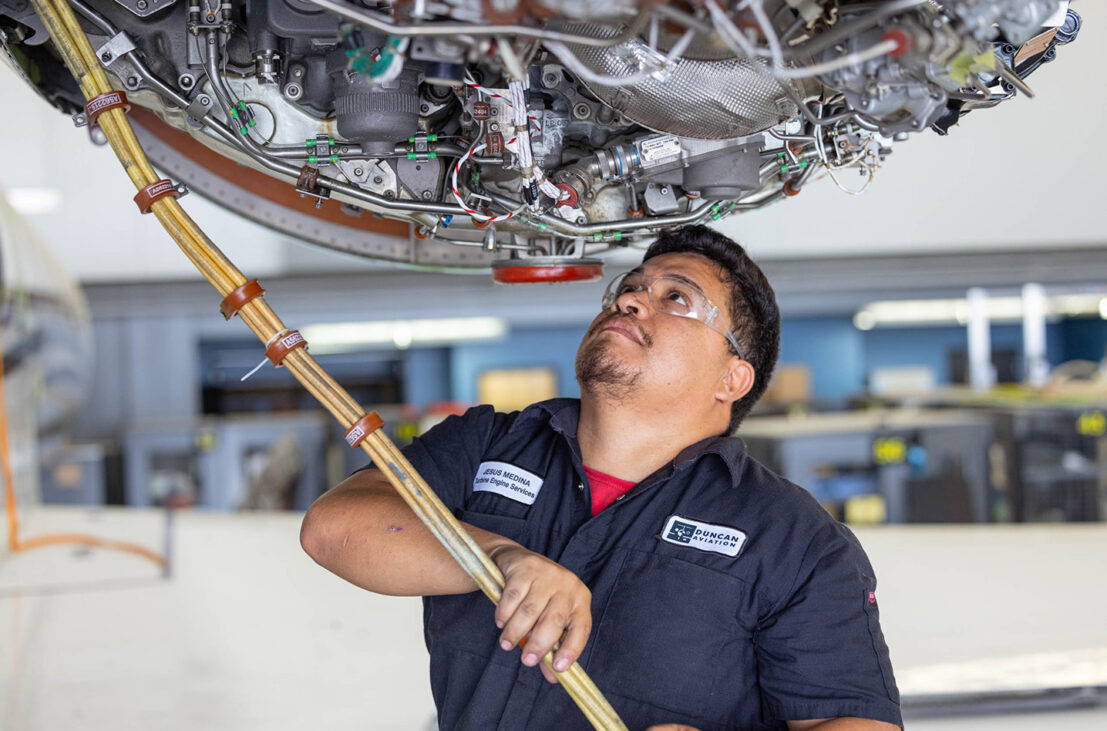
Sept. 13, 2023
Business aviation will continue to experience supply chain constraints, a tightened labor market and limited maintenance space for the foreseeable future, but the community has already found innovative solutions to these challenges that will ultimately help the industry grow and prosper.
That was the conclusion of a panel of industry experts on an NBAA Thought Leadership Webinar: Focusing on the Last Bit of 2023 – Headwinds, Tailwinds & Managing Our Success, which was sponsored by Mesinger Jet Sales.
“While there are some areas of improvement, generally speaking, we are all being challenged by supply chain issues,” said Chad Anderson, CEO and board member of aircraft sales, acquisition and trading firm Jetcraft. “We are also competing against labor retirements and demand for facility space to complete inspections, and maintenance will continue growing for several years. And it’s not just us; every industry is experiencing similar headwinds.”
It could take a decade or more for these issues to be rectified, but by working together, the business aviation community can overcome these hurdles today, noted Mike Menard, Bombardier’s senior director of aftermarket service for the Americas.
“There is more than enough work going around for all of us, so rather than approaching this as a first come, first serve basis, as an industry, we can come together – while still remaining competitive – and cooperate in an environment where we all benefit and better serve our customers,” Menard said.
This approach can work at every level of the industry, explained Jeff Lake, president and CEO of Duncan Aviation. For instance, when the supply of parts is constrained, companies can work together to ensure a steady flow of components to manufacturers and maintenance operators, rather than stockpiling at one company or a single sector.
“Here at Duncan, we’ve worked more closely with the OEMs and others to build a network that increases the visibility of our pools,” Lake said. “In this way, service centers and the OEMs collaborate and put real effort into working together to help customers find those parts or alternatives versus just trying to keep things to ourselves. That way, we all profit and turn a supply chain problem into a supply chain solution.”
This cooperation highlights a growing acceptance of pre-planning across the entire business aviation sector, the panelists said, noting that the industry now appreciates that inspections and maintenance must be scheduled months in advance. This approach brings much-needed stability to the industry, they added.
A fresh approach to recruiting that embraces outreach to younger workers – even those still in high school – also will reap benefits for the industry, the panelists noted, although they acknowledged it would take several years to fully realize this gain as retirees often take 30- to 40-years of experience with them when they leave.
“We should all realize that we are in a good place,” said Anderson. “Today, our industry is more balanced: We have good demand, but now, with an improved supply that provides more options for everyone. On top of that, we have a better-educated seller community out there that’s more amenable to a natural purchase process. As long as we don’t overplay our cards and realize there will be twists and turns along the way, the future looks bright.”


 International Business Aviation Council Ltd.
International Business Aviation Council Ltd.